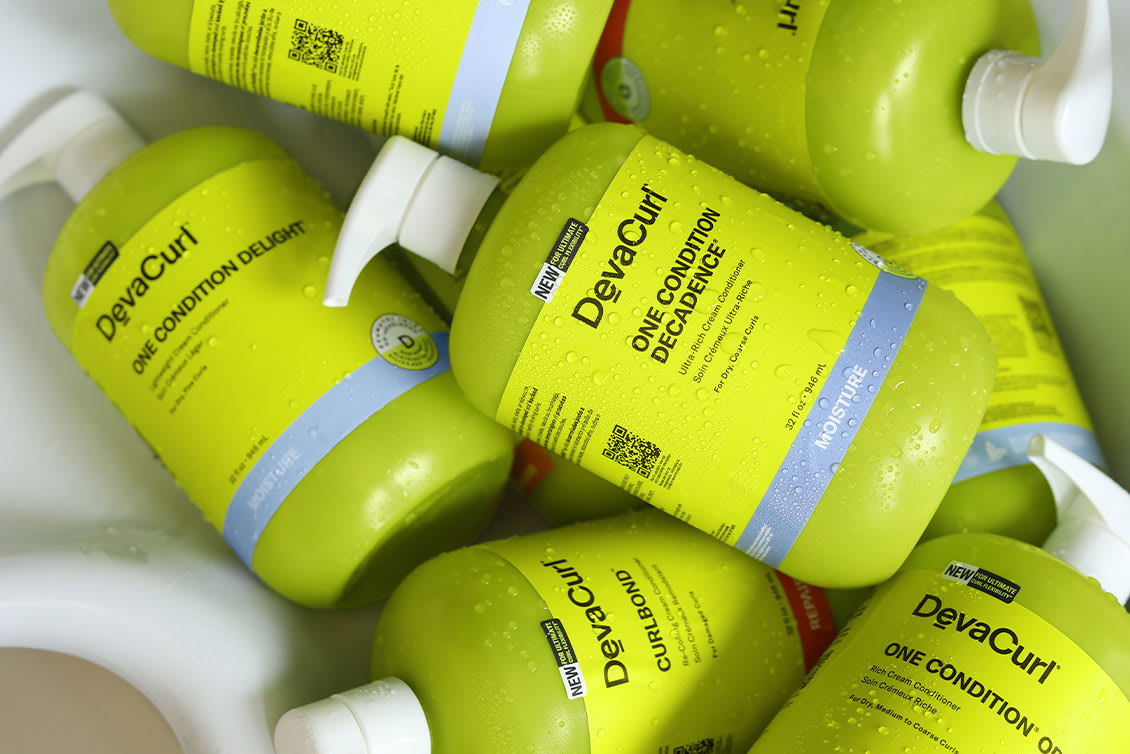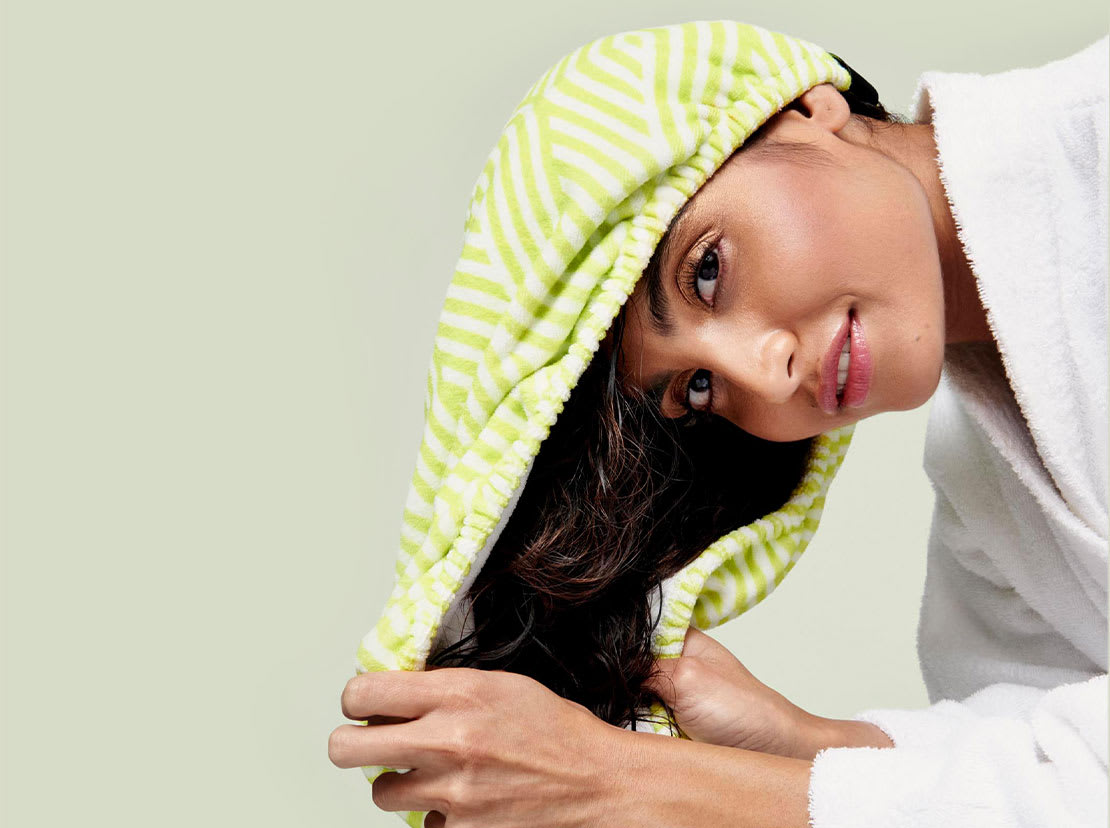Curating a Curly Hair Routine
Starting a new hair care routine can sound daunting, but it doesn’t have to be. It can be just as fun to try new hair products as it is to try out new hairstyles.


Your curls aren’t like everyone else’s, so why should you treat them like they are? A product that worked for a friend might not be the best for you and vice versa. That’s why there’s not a one-size-fits-all care routine. Not to mention, as time goes on and as seasons change, your hair care routine will likely change too!

Starting a new hair care routine can sound daunting, but it doesn’t have to be. It can be just as fun to try new hair products as it is to try out new hairstyles.
First, we recommend trying out some sample-sized products before you commit to spending money on full-sized products. Sample sizes will allow you to test the product and see if it works for you before plunging in headfirst.
We also suggest trying to adjust to one product at a time. It can be really exciting to take charge of your routine as you learn how to take care of naturally curly hair, but for best results, try moving slowly. Using this method, you can figure out which products are actually doing all of the work and which ones might still need to be adjusted.
Also, don’t forget, change takes time. Give your curly hair 2-3 washes or a few weeks to react to routine changes. Rome wasn’t built in a day, and building better hair days doesn’t happen overnight.
There are plenty of reasons people change up their hair care routine, so let’s explore a few hair tips and some hair care products that could end up being your secret weapon.

Styling products and natural oils typically equal luscious locks. But, there’s a point when those layers of product and oil are no longer being absorbed. Instead, they sit on the strands blocking any additional products from being absorbed by the hair. Typically, you can tell when you have buildup because your hair may be dull, curly hair might be limp, and the hair has a dry feeling to the touch. These are all signs of product buildup, natural oils from your scalp, sweat, and more.
When starting a new routine, you might want to first take a moment to break up the buildup. This way, you are starting with a clean slate — literally. Check out Buildup Buster®, which is excellent for all hair types and all curl patterns. You can use this product weekly or as needed to help cleanse the hair and encourage curls to absorb other hair products more efficiently while promoting bouncy curls.

It doesn't matter if you have fine, medium, or coarse hair texture or if you have waves, curls, or coils, all hair needs hydration, and dry hair is commonly seen as the enemy. Now, how much hydration your hair needs will depend on your hair type and the curl pattern you have.
For example, fine hair textures need lightweight hydrating products. If a product is too heavy, it will weigh down fine hair as this hair type is more sensitive and prone to breakage. That’s why we would recommend One Condition Delight®, which offers lightweight, creamy conditioning and hydration.
When it comes to curly hair care, medium to coarse textures can usually handle heavier hydrating products and deep conditioning. To start, check out One Condition Original® which is a richer cream conditioner for medium to coarse curls of all kinds. It’s a special blend that hydrates to help fight tangles, control frizz, and leave curls feeling nourished, soft, and bouncy.
As mentioned before, trying out sample sizes is also a great way to get started, so you might also want to check out our Essential Starter Kits formulated for your hair texture as you curate your curl care.
Overall, avoiding dryness and maintaining hydration is a must for any curly hair routine.

If we haven’t said it enough, moisture is key for healthy, defined curls. However, other options are available to you aside from oils and conditioners that you can use in your curly hair routine to help fight frizzy days. Experts say it’s worth trying silk pillowcases and microfiber towels and wraps to help dry curls of all kinds avoid frizz.
We, of course, recommend the DevaTowel® and the DevaTwist™. Both products are made of a soft, microfiber fabric that helps dry your curls without roughing them up like a terrycloth towel tends to do. With these products, your curls can dry with enhanced shape and less frizz — it’s a win/win!

The difference between high and low porosity hair will ultimately cause a shift in hair care. Before going any further, it’s important to understand porosity, how it changes and how it impacts your hair strands.
Hair’s porosity describes how the cuticles absorb and maintain moisture. Low porosity hair translates to compact cuticles that are difficult for moisturizing products to penetrate. Meanwhile, high porosity hair absorbs moisture because the cuticle is lifted, sometimes because of color processing or heat damage.
Different levels of porosity have their pros and cons. For example, high porosity hair is quick to absorb hydrating products, but it also sucks up moisture from its environment, resulting in frizz. Low porosity hair is slow to absorb moisture, but when it’s locked in, it’s there to stay.
You can determine your hair’s porosity by doing a simple test. All you need to do is place a strand of hair in a glass of water and watch how the hair reacts. If it floats for a long time, that’s a sign of low porosity hair. If it sinks quickly, it’s likely your hair has high porosity.
So here again, we arrive at potentially the most important part of curly hair care — moisture! Once you determine your porosity, you can determine how much and what kind of hydration your hair needs.
For high porosity hair, it’s key to look for oil-based ingredients in shampoos and conditioners. It’s also suggested to use leave-in conditioners and heat protectant products to help your hair hold on to moisture. You might even want to try out our Flexfactor™, which is a heat and UV protective lightweight formula.
As for low porosity hair, we recommend applying conditioner to wet hair and look for ingredients like glycerin and honey in shampoos and conditioners. You should also try to avoid oil-based products as they tend to be more difficult for the hair to absorb.

DevaCurl® expert, hairstylist, and trichologist, Dr. Kari Williams encourages everyone to know their hair, especially people with natural curls. “It’s so important to not only understand your hair but to love your hair. So that when you start to make decisions about the products that you should use and the haircare regimens that you should develop for yourself, it’s personal.”
Your hair is just as unique as your DNA, and your needs will inevitably change over time. Taking care of curly hair and creating a hair care routine is a personal journey that you have to detangle. That’s why it’s so important to get to know your hair so you can care for it today, tomorrow, and for all better hair days.